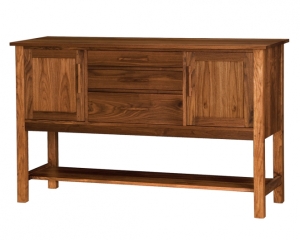<<-Previous | Home | Next->> Circulation
On Value
Every product or service that is sold has value. Some things have intrinsic value, such as iron ore or corn, every other object gets its value from the fact that work has gone into making it (at least on top of any intrinsic value). If you pull a gold nugget out of a stream, its value is there, but virtually all else has at least some part of its value come from the work put into it.
One does not have to be a Marxist to see that a product’s value is any intrinsic value plus the value added by labor put into it. One does not place a bunch of electronic components into a jar and shake and come up with an iPhone, and every one of the components was also manufactured. (I should note that labor has many forms and may include abstract things such as intellectual labor that went into design of the product, etc.)
A stack of wood has a certain value, but many times more when converted to a piece of craftsman furniture.
I should note here that ultimately, value is in the eye of the beholder. Nothing at all has changed to that 1 oz. of gold that changes in dollar value on a daily basis. At any point in time, the value of a given object (or service) is that perceived by the potential buyer. This is, in turn, a complex relationship of needs, desires and availability of the tender of exchange (be that dollars, or chicken eggs). To a starving man a diamond is worthless if it cannot be exchanged for food. In a market overloaded with mousetraps, even the best made and most functional product will have a lower value. (I have written here on the concept of Perceived Value.)
But all this has to do with the momentary resale value of an object. When all is said and done, whatever value resides in some particular mousetrap does so only because of the materials and workmanship that has gone into creating it. Otherwise, it would be a worthless little chunk of metal and a stick of wood.
And this brings us to a painful truth.
Capital by itself does not create any value.
Clearly capital is important in initializing, organizing, and supporting the creation of value, but by itself it creates no new value. The production process is the only method of creating new value. It’s tautological to say so, but the creation of some new object of value comes from the production of said object.
And this is why the cycle of Figure 3B works. Profits can be taken out only because production creates value.
works. Profits can be taken out only because production creates value.
Production, and the labor that begets it, creates new value, and this drives the revenue stream that provides both wages for the workers and profits for shareholders.
And this brings us to the next topic – Circulation.
<<-Previous | Home | Next->> Circulation
— Comments Appreciated —
Elegant, Handcrafted, Genuine Leather
SmartPhone Holster
Soon for iPhone 6 Plus!
Thank you!
————————————————————————————————————–




I didn’t get the point of resonance!